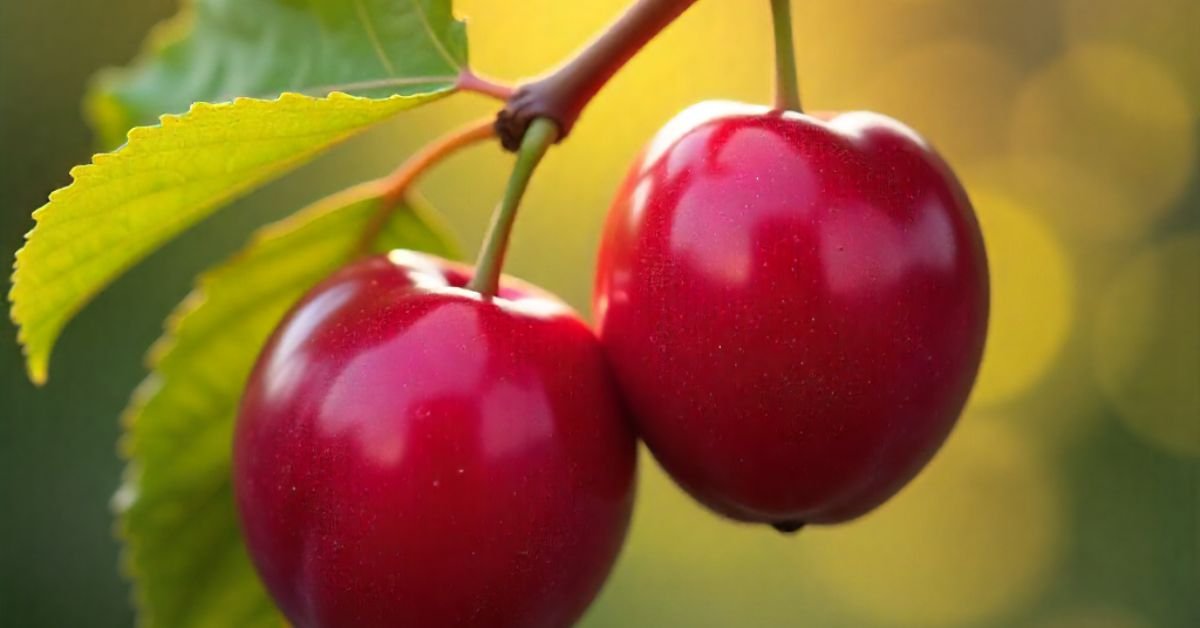mirabelle plum. This rare and exquisite fruit is a true treasure for food lovers, gardeners, and anyone seeking a taste of something special. But what makes the mirabelle plum so unique? Why is it celebrated in gourmet kitchens and cherished in home orchards across Europe—and why is it so hard to find elsewhere?
In this comprehensive guide, we’ll explore everything you need to know about the mirabelle plum: its history, health benefits, culinary uses, and how it compares to other yellow and golden plums. Whether you’re a curious foodie, a home gardener, or just someone who loves discovering new flavors, you’ll find plenty of reasons to fall in love with this golden gem.

What Is a Mirabelle Plum? The Golden Jewel of Lorraine
The mirabelle plum (Prunus domestica subsp. syriaca) is a small, round, yellow plum with a delicate, sweet flavor and floral aroma. Native to the Lorraine region of northeastern France, the mirabelle is often called the “queen of plums” for its exquisite taste and limited availability.
Unlike the more common yellow plum or golden plum varieties, the mirabelle is prized for its unique balance of sweetness and tartness. Its thin skin and juicy flesh make it perfect for eating fresh, baking, or transforming into preserves and liqueurs.
The Mirabelle Fruit: A Brief History
The story of the mirabelle fruit is as rich as its flavor. Cultivated in Lorraine since at least the 15th century, the mirabelle plum has become a symbol of regional pride. In fact, the “Mirabelle de Lorraine” is protected by a European PGI (Protected Geographical Indication), meaning only plums grown in this region can bear the name.
Every August, the city of Metz hosts the Fête de la Mirabelle, a festival celebrating the harvest with parades, tastings, and all things mirabelle. It’s a testament to how deeply this fruit is woven into the local culture.
Mirabelle Plum vs. Yellow Plum vs. Golden Plum: What’s the Difference?
It’s easy to confuse the mirabelle plum with other yellow or golden plums, but there are key differences:
- Mirabelle Plum: Small, round, golden-yellow, intensely sweet and aromatic. Mostly grown in Lorraine, France.
- Yellow Plum: A general term for any plum with yellow skin and flesh. Can be larger and less sweet than mirabelles.
- Golden Plum: Another broad term, sometimes used for mirabelles but also for other yellow varieties.
While all are delicious, the mirabelle’s unique flavor and texture set it apart. If you’ve only tried generic yellow plums, you’re in for a treat with the real mirabelle.
Mirabelle Prune: The Dried Delicacy
You might see the term mirabelle prune and wonder if it’s the same as the fresh fruit. In French, “prune” simply means “plum,” but in English, it usually refers to dried plums. Dried mirabelles are a delicacy in their own right, with a concentrated sweetness and chewy texture that’s perfect for snacking or baking.
Health Benefits of Mirabelle Plum
Why should you add mirabelle plums to your diet? Here are some science-backed reasons:
Rich in Antioxidants
Mirabelle plums are packed with polyphenols and vitamin C, which help fight oxidative stress and support immune health.
Good Source of Fiber
Like other plums, mirabelles are high in dietary fiber, promoting healthy digestion and helping to regulate blood sugar.
Low in Calories
A handful of mirabelle plums makes a satisfying, guilt-free snack—perfect for anyone watching their weight.
Supports Heart Health
The potassium in mirabelle plums helps maintain healthy blood pressure and supports cardiovascular function.
Natural Energy Boost
With their natural sugars and vitamins, mirabelles provide a quick, healthy pick-me-up.
User Quote:
“I started adding mirabelle plums to my morning yogurt, and not only do they taste amazing, but I feel more energized throughout the day.”
Culinary Uses: How to Enjoy Mirabelle Plums
The mirabelle plum is incredibly versatile in the kitchen. Here are some classic and creative ways to enjoy this golden fruit:
Fresh Eating
There’s nothing like biting into a ripe mirabelle straight from the tree. The skin is thin, the flesh is juicy, and the flavor is unforgettable.
Baking
Mirabelles shine in tarts, clafoutis, and cakes. Their sweetness intensifies when baked, making them a favorite for French patisseries.
Bonne Maman Plum Preserves
If you can’t find fresh mirabelles, try Bonne Maman plum preserves. This beloved French brand uses mirabelles to create a jam that’s perfect on toast, in yogurt, or as a glaze for meats.
Liqueurs and Spirits
Mirabelle eau-de-vie is a traditional fruit brandy made by fermenting and distilling the plums. It’s a staple in Lorraine and a unique addition to cocktails.
Salads and Savory Dishes
Slice mirabelles into salads for a burst of sweetness, or pair them with cheese and charcuterie for a gourmet appetizer.
Growing Mirabelle Plums: Can You Do It at Home?
While the mirabelle plum is most famously grown in Lorraine, it’s possible to cultivate these trees in other temperate regions. Here’s what you need to know:
Climate and Soil
Mirabelle trees thrive in well-drained soil and full sun. They’re hardy in USDA zones 5–8, making them suitable for much of Europe and parts of North America.
Planting and Care
- Plant in early spring or fall.
- Water regularly, especially in dry spells.
- Prune in late winter to maintain shape and encourage fruiting.
Harvesting
Mirabelles ripen in late summer. The fruit should be golden and slightly soft to the touch. Handle with care—they bruise easily!
Mirabelle Plum Recipes: Sweet and Savory Inspiration
Ready to get cooking? Here are a few ideas to make the most of your mirabelle harvest (or your jar of Bonne Maman plum preserves):
Mirabelle Plum Tart
A classic French dessert, this tart combines buttery pastry with sweet, juicy plums. Serve with a dollop of crème fraîche for a true taste of Lorraine.
Mirabelle Jam
Simmer mirabelles with sugar and a splash of lemon juice for a simple, delicious jam. Spread on toast or swirl into oatmeal.
Roasted Chicken with Mirabelle Plums
Toss halved plums with olive oil, thyme, and a pinch of salt. Roast alongside chicken for a sweet-savory main course.
Mirabelle Plum Chutney
Cook mirabelles with onions, vinegar, and spices for a tangy chutney that pairs beautifully with cheese or grilled meats.
Mirabelle Plum in Culture and Tradition
The mirabelle fruit isn’t just a food—it’s a symbol of regional identity in Lorraine. The annual Fête de la Mirabelle draws thousands of visitors, with parades, music, and, of course, plenty of plum-based treats.
In literature and art, the mirabelle is often associated with nostalgia, childhood, and the fleeting beauty of summer.
Mirabelle Plum: Risks and Considerations
While mirabelle plums are generally safe and healthy, there are a few things to keep in mind:
Allergies
As with any fruit, some people may be allergic to plums. If you have a known stone fruit allergy, proceed with caution.
Pesticides
If you’re buying non-organic plums, wash them thoroughly to remove any pesticide residue.
Availability
Fresh mirabelles are rare outside of Europe. If you find them, savor the opportunity!
Mirabelle Plum vs. Other Plums: A Quick Comparison
| Feature | Mirabelle Plum | Yellow Plum | Golden Plum |
|---|---|---|---|
| Size | Small | Medium to large | Medium |
| Color | Golden yellow | Yellow | Golden |
| Flavor | Sweet, floral, tart | Mild, less sweet | Varies |
| Origin | Lorraine, France | Various | Various |
| Culinary Uses | Fresh, baking, jam | Fresh, baking | Fresh, baking |
Mirabelle Plum in the Modern Kitchen: 2025 Trends
In 2025, chefs and home cooks are rediscovering the mirabelle plum for its unique flavor and versatility. From farm-to-table restaurants to artisanal bakeries, mirabelles are making a comeback.
Trending Uses
- Mirabelle cocktails with gin or sparkling wine
- Mirabelle sorbet for a refreshing summer dessert
- Mirabelle-glazed pork for a sweet-savory twist
Bonne Maman Plum Preserves: Bringing Mirabelle to the World
If you can’t find fresh mirabelles, Bonne Maman plum preserves are the next best thing. Made with real mirabelle plums, these preserves capture the fruit’s essence in a jar. Spread it on a croissant, swirl it into yogurt, or use it as a filling for pastries.
User Review:
“I grew up in Lorraine, and Bonne Maman’s mirabelle jam tastes just like home. It’s the perfect way to enjoy mirabelles year-round.”
Mirabelle Plum: Sustainability and the Future
As demand for unique, heirloom fruits grows, the mirabelle plum is gaining attention from sustainable farmers and foodies alike. Supporting local growers and choosing organic options helps preserve this rare fruit for future generations.
FAQs
1. What is a mirabelle plum, and how is it different from a yellow plum?
A mirabelle plum is a small, golden-yellow fruit native to Lorraine, France. It’s sweeter and more aromatic than most yellow plums, with a unique floral flavor.
2. Can I grow mirabelle plums at home?
Yes! Mirabelle trees can be grown in temperate climates with well-drained soil and full sun. They’re hardy and relatively easy to care for.
3. What are some popular uses for mirabelle plums?
Mirabelles are delicious fresh, in tarts, jams, and liqueurs. Bonne Maman plum preserves are a popular way to enjoy their flavor year-round.
4. Are mirabelle plums healthy?
Absolutely. They’re rich in antioxidants, fiber, and vitamins, making them a nutritious addition to your diet.
Final Thoughts
The mirabelle plum is more than just a fruit—it’s a symbol of tradition, flavor, and the joy of discovery. Whether you’re savoring a fresh mirabelle, baking a golden tart, or spreading Bonne Maman plum preserves on your morning toast, you’re experiencing a taste of history and a burst of natural sweetness.
CLICK HERE FOR MORE BLOG POSTS
Liam is a freelance writer, blogger, and digital media journalist. He has a management degree in Supply Chain & Operations Management and Marketing and boasts a wide-ranging background in digital media.











